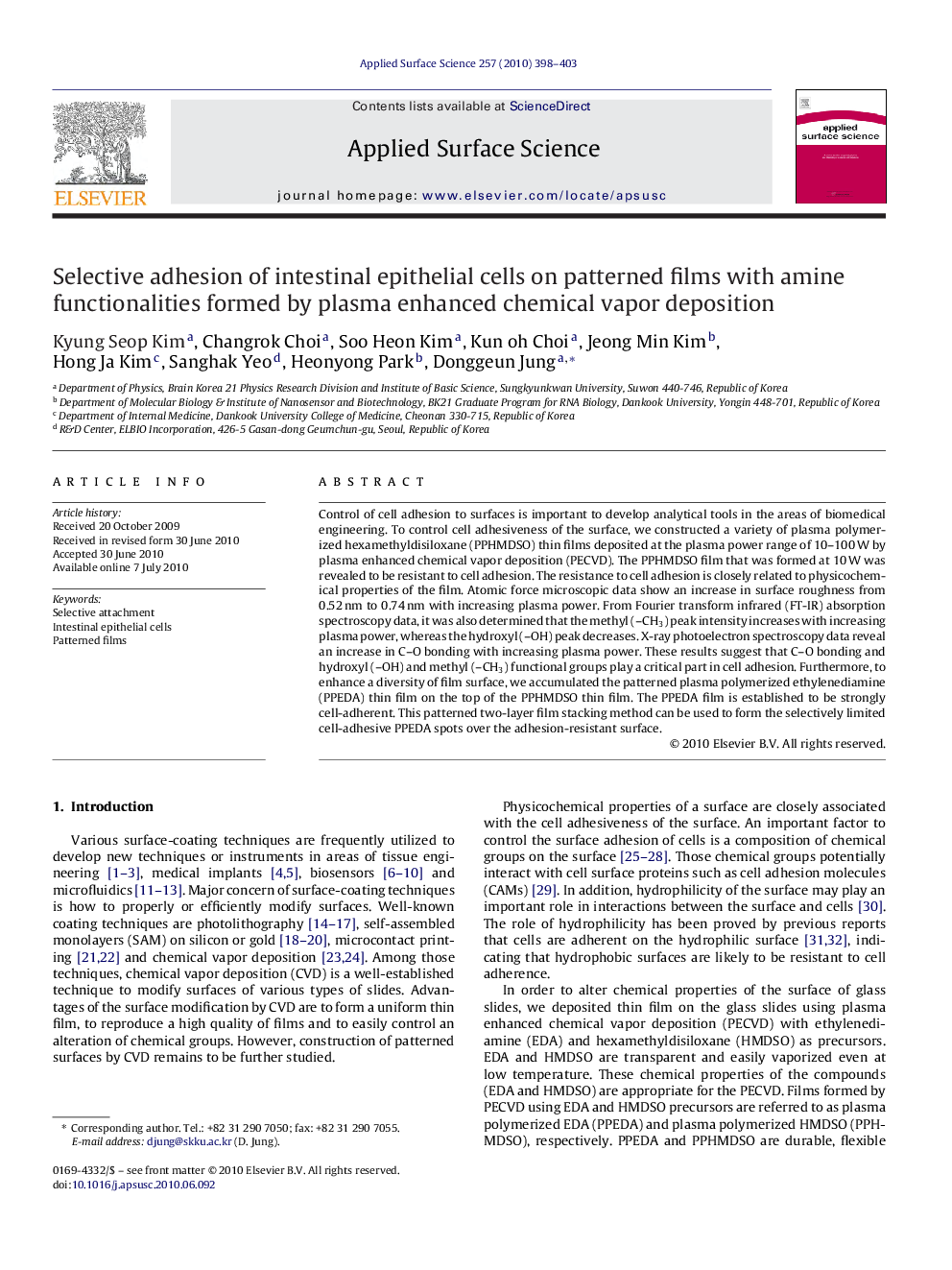| Article ID | Journal | Published Year | Pages | File Type |
|---|---|---|---|---|
| 5364766 | Applied Surface Science | 2010 | 6 Pages |
Abstract
Control of cell adhesion to surfaces is important to develop analytical tools in the areas of biomedical engineering. To control cell adhesiveness of the surface, we constructed a variety of plasma polymerized hexamethyldisiloxane (PPHMDSO) thin films deposited at the plasma power range of 10-100Â W by plasma enhanced chemical vapor deposition (PECVD). The PPHMDSO film that was formed at 10Â W was revealed to be resistant to cell adhesion. The resistance to cell adhesion is closely related to physicochemical properties of the film. Atomic force microscopic data show an increase in surface roughness from 0.52Â nm to 0.74Â nm with increasing plasma power. From Fourier transform infrared (FT-IR) absorption spectroscopy data, it was also determined that the methyl (-CH3) peak intensity increases with increasing plasma power, whereas the hydroxyl (-OH) peak decreases. X-ray photoelectron spectroscopy data reveal an increase in C-O bonding with increasing plasma power. These results suggest that C-O bonding and hydroxyl (-OH) and methyl (-CH3) functional groups play a critical part in cell adhesion. Furthermore, to enhance a diversity of film surface, we accumulated the patterned plasma polymerized ethylenediamine (PPEDA) thin film on the top of the PPHMDSO thin film. The PPEDA film is established to be strongly cell-adherent. This patterned two-layer film stacking method can be used to form the selectively limited cell-adhesive PPEDA spots over the adhesion-resistant surface.
Related Topics
Physical Sciences and Engineering
Chemistry
Physical and Theoretical Chemistry
Authors
Kyung Seop Kim, Changrok Choi, Soo Heon Kim, Kun oh Choi, Jeong Min Kim, Hong Ja Kim, Sanghak Yeo, Heonyong Park, Donggeun Jung,
